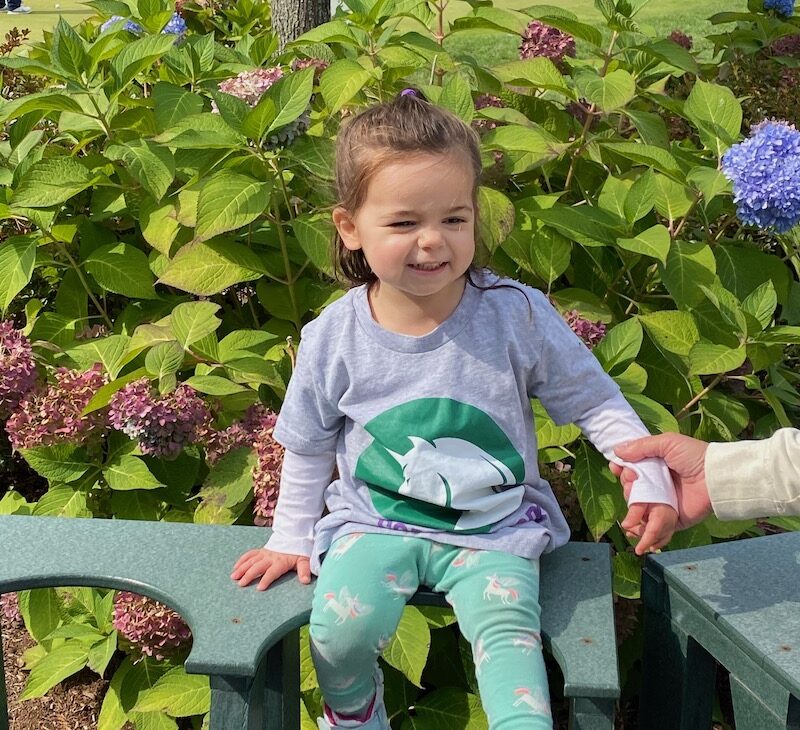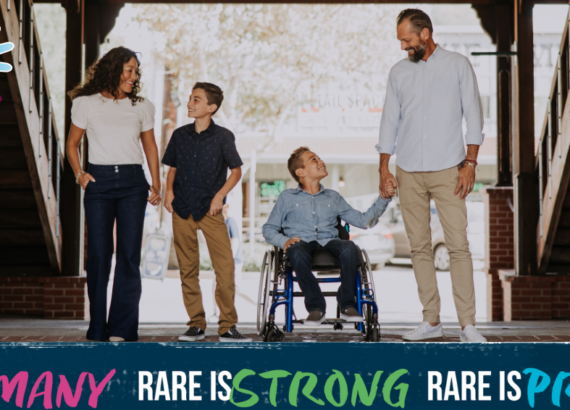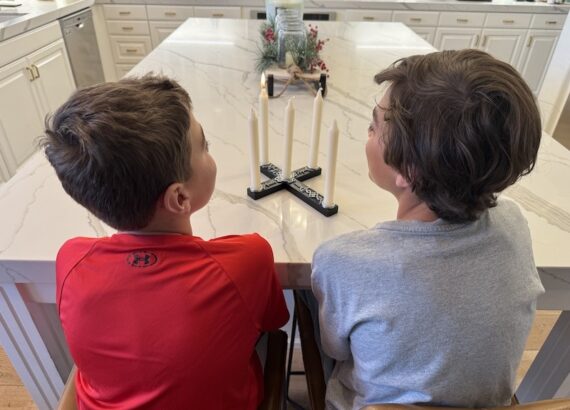Sharing My Stripes by Margot LaFreniere

Our daughter Sophie (Now three years old) was diagnosed with a rare genetic disease called Glycogen Storage Disease (Type 1b) in September of 2019 at the age of 22 months.
Overall since the diagnosis, we as a family have gone through various stages of grief and acceptance of Sophie’s GSD diagnosis. GSD 1b occurs in approximately 1/1,000,000 births. She is one of about 500-800 people in the world living with this disease. As I’m sure, it is for many rare diseases it can be very isolating most of the time. As a parent, it has left me feeling helpless at times. You never want your child to endure any sort of hardship. Never mind the hardships associated with living with a lifelong rare genetic disease. GSD diagnoses are not typically made the way Sophie’s was; for many, GSD is diagnosed in infancy when infants present with seizures and lethargy associated with hypoglycemia. For us, Sophie had a failure to thrive; she was not eating solid foods, not growing, or gaining weight at a normal rate. This led us to see a series of specialists, including a gastroenterologist, hematologists, geneticists, and metabolic specialists, ultimately leading to her diagnosis.
What glycogen storage disease means simply is that Sophie’s body is missing the enzyme to convert glycogen (the body’s stored form of glucose) into glucose as a form of energy. As a result, she is at risk for severe hypoglycemia, seizures, and even death. GSD 1b also has a component of neutropenia (low white blood cells), which puts her at higher risk for infections. Sophie’s treatment consists of a strict diet of no sugar and limited carbohydrates. Diet is used in combination with scheduled 4-hour feedings of corn starch to maintain and normal glucose level. Sophie’s blood glucose is checked every 4 hours by fingerstick. She also receives daily filgrastim injections to boost her neutrophil count. These injections put her at risk for leukemia later in life. The current treatment for this disease can be daunting at times. One of the hardest things has been accepting this as the only treatment available for her disease, wishing more could be done. While we are grateful for advances in science and the current treatment, the reality is this will be a lifelong treatment for her unless research and advances are made for the better.
The pursuit of better treatment has become a source of motivation for my husband and I. This past year we started a registered 501c3 foundation, Sophie’s Hope Foundation, in her honor to fund research specifically in GSD 1b. Research and clinical trial work are currently being done for GSD type 1a (the more common type of this disease) with gene therapy. The research being done in GSD 1b is presently being done in the laboratory setting. There are more obstacles associated with potential gene therapy for GSD 1b because there is more than one cell line affected by this disease (liver and immune). There are also fewer people affected by this disease, thus less interest from drug companies. My husband and I started a foundation to support research in GSD 1b, and our hope is that we can make an impact in funding better treatments and ultimately a cure. Hope for a cure is so important to all of us.
We have found that sharing our story has led to more awareness of this disease. This has also proven to be cathartic to us as we grieve this diagnosis and navigate the treatment for GSD 1b. We would do anything to find a cure and/or better treatment for this disease. We hope by sharing our story, we increase awareness, potentially make more connections in the rare disease community, and most importantly, that our story instills hope.
Guest post by Margot LaFreniere, GSD 1b advocate, Founder of Sophie’s Hope Foundation, and Rare Mama to Sophie
https://sophieshopefoundation.org/







